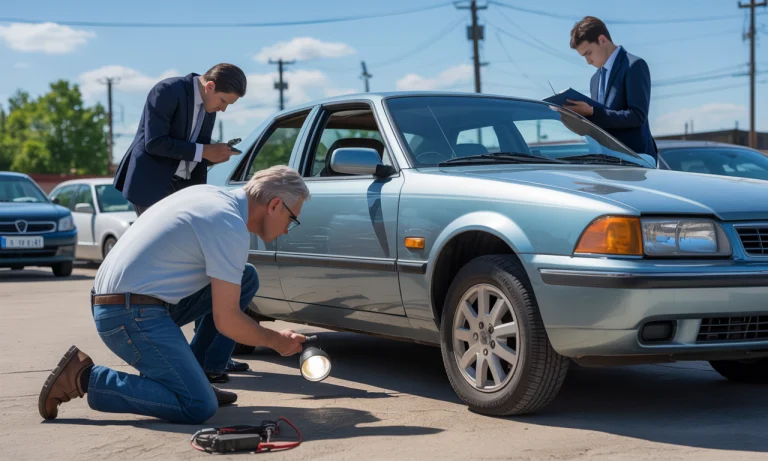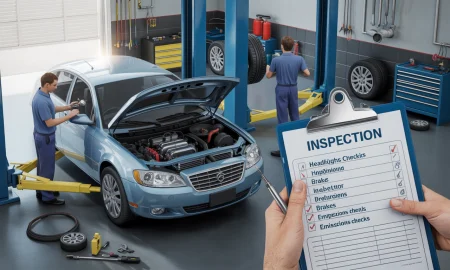Every year, thousands venture into the shifting market of used cars—searching for that elusive sweet spot of trustworthy reliability and attractive price. Yet, beneath shiny paint and glossy sales pitches, well-hidden problems lurk, threatening even savvy buyers with potential financial disasters. Recent data from platforms like Carfax and AutoCheck have exposed that over 20% of pre-owned vehicles carry concealed defects or histories misrepresented by sellers. In this labyrinth, the naïve risk driving home a “lemon”—a car whose clean looks mask costly repairs. Today’s car buyers, facing persistent inflation and an explosion of online marketplaces like CarGurus and TrueCar, need sharper instincts than ever. From odometer tricks to skillful accident cover-ups, the hunt for a solid ride demands vigilance. Let’s follow Emily, a canny buyer, as she navigates the hazards, with lessons drawn straight from the experiences of top reviewers at Consumer Reports, AAA, and beyond.
Unmasking Common Red Flags: Hidden Problems Every Buyer Should Spot
From the moment Emily set eyes on her prospective sedan at a local CarMax, she paid special attention to details most would overlook. Noticing a subtle mismatched gloss on the rear panel, she remembered stories circulating on CarGurus about sellers painting over accident damage. Equally, a faint whiff of mildew inside the cabin echoed AAA’s advice—never dismiss a musty smell, as it could signal flood exposure. When she ran her hand over the steering wheel and pedals, excess wear didn’t quite match the low mileage displayed. She’d read on Edmunds about the widespread issue of odometer rollbacks, frequently uncovered thanks to diligent record-keeping by VinAudit and AutoCheck. Each detail, however small, was a clue—helping Emily sift truth from sales patter in a market where subtlety can mean the difference between a dream deal and a mechanic’s nightmare.
| Warning Sign | Potential Cause | Where to Check |
|---|---|---|
| Inconsistent paint, panel gaps | Past accident, poor repair | Exterior panels, trunk, hood |
| Musty odor, damp carpet | Flood damage | Carpet, trunk crevices, under seats |
| Excessive pedal/wheel wear vs mileage | Odometer fraud | Driver’s seat, pedals, steering wheel |
| Odd sounds on start/test drive | Engine, transmission, suspension faults | Engine bay, during driving |
| Rust on undercarriage/wheel wells | Neglect, salt/flood corrosion | Undercarriage, inside wheel wells |
Deceptive Tactics Sellers Use to Hide Lemon Cars
Emily’s research illuminated a world of sleight of hand among less reputable sellers. A friend’s recent brush with title washing led her straight to the NMVTIS for a multi-state check, a precaution highlighted in Consumer Reports guides. She learned that disconnecting a battery could be a trick to reset engine warning lights, a deception that only a portable OBD2 scanner can expose—a tool Emily always brings, as recommended by mechanics featured on YouTube car inspection tutorials. The prior owner’s eagerness to schedule her viewing on a rainy evening seemed innocent, but seasoned buyers recognize this as a camouflage for scratches or exhaust smoke, often invisible in dim conditions. Pressured to commit on the spot, Emily quickly demurred, recalling advice from Edmunds and Carfax: haste is the ally of the unscrupulous. Her careful steps mirrored those found in practical checklists on top resources, including this updated buying guide for 2025, ensuring no shortcut would trip her up.
| Seller Trick | Detection Tip | Verification Tool |
|---|---|---|
| Odometer rollback | Compare records, inspect wear | AutoCheck, Carfax, VinAudit |
| Title washing | Cross-state registration history | NMVTIS, Carfax |
| Flood damage hiding | Check for rust, odors, stains | AAA inspection, Consumer Reports ratings |
| Frame damage concealment | Panel gaps, weld inspection | Pro mechanic, AAA, CarMax inspection |
| Quick fixes for sales | Test after warm-up, extended drive | Mechanic’s evaluation |
How to Protect Yourself from Hidden Problems When Buying a Used Car
Safe passage through the pitfalls of used-car shopping demands more than just luck—it calls for a methodical approach, as Emily demonstrated. First, she booked a pre-purchase inspection with an AAA-approved garage, ignoring any seller reluctant to agree. She pulled comprehensive data from Carfax and VinAudit before arranging her test drive, letting digital footprints reveal stories the seller left unsaid. During her drive, Emily varied her speed, braked suddenly, and listened for abnormal sounds, just as suggested by experts on 2025 automotive guides and in AAA webinars. Through careful comparison of values on Kelley Blue Book and cross-listing on CarGurus and TrueCar, she contextualized her offer, quickly recognizing unrealistic bargains for what they were—potential traps. Finally, double-checking the VIN on all documentation, she dodged another common ruse. Her steady, thorough progress rendered every pressure tactic void, making her story one of confidence rather than regret.
Real-World Application: Turning Knowledge into Power When Shopping for a Used Car
In one instance, Emily found a deal on TrueCar that seemed suspiciously cheap compared to Edmunds’ suggested value, despite the car’s pristine Carfax report. Digging deeper, she discovered through CarGurus forums that certain models had a history of subtle engine recalls. A call to Consumer Reports confirmed the risk. Rather than falling prey to “too good to be true,” Emily’s decision to pass up the bargain proved wise—later, she found the same model on another site, where a full AAA inspection revealed bent frame rails, once again validating her vigilance.
Stories like Emily’s are not rare, extending across myriad sites—CarMax’s transparent fixed-price system, for example, offers a reprieve from high-pressure tactics, while Kelley Blue Book and VinAudit supply context for both value and procurement history. The interconnectedness of modern car shopping platforms in 2025 means buyers are armed with more information than ever—if they take the time to use it. For even more insights and step-by-step tips that could save both your wallet and your patience, explore this comprehensive new and used car buying resource. The market has evolved, but so have the ways to outsmart it.
Frequently Asked Questions on Spotting Hidden Used Car Problems
How can I verify if a used car’s mileage is accurate?
Inspect wear on common touchpoints inside the car, consult the vehicle’s maintenance log, and always compare findings with official Carfax, AutoCheck, and VinAudit reports for discrepancies.
What do I do if the seller refuses a pre-purchase inspection?
This is a major warning sign. It’s best to walk away and seek listings—such as those reviewed by AAA or CarMax—that openly welcome independent inspections.
Is it safe to trust a car with a clean Carfax or AutoCheck history report?
While these reports are invaluable, no system is foolproof. Always combine history reports with a physical inspection, a test drive, and a professional mechanic’s assessment.
Which sites are best for cross-checking used car prices and histories?
Consult platforms like Edmunds, Kelley Blue Book, CarGurus, TrueCar, and VinAudit for valuation and historical insights, and reference Consumer Reports for reliability data.
How do I avoid pressure tactics during a used car purchase?
Insist on taking your time. Don’t rush decisions, trust your instincts, and use resources like this 2025 buying guide to structure each step.
Did you like it? 4.5/5 (20)







